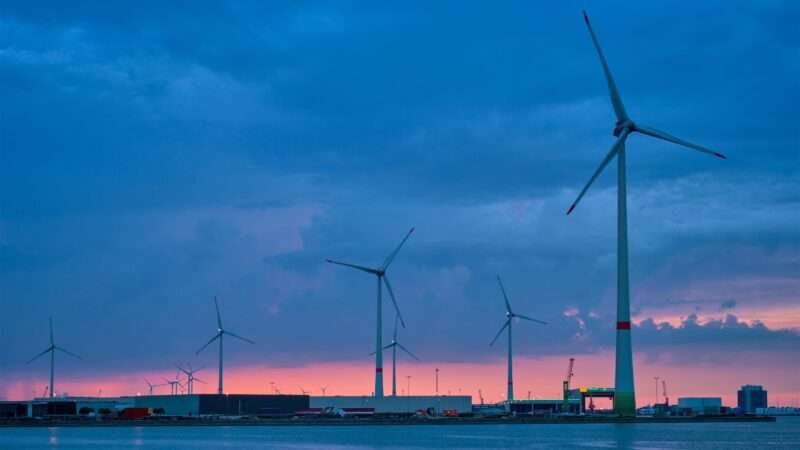
Federal permitting requirements remain one of the biggest impediments to the federal government’s goal of expanding America’s clean energy supply.
Just look at what happened last week in upstate New York, where a planned wind energy project in the middle of the Hudson River has been stalled for months due to federal permitting rules. To speed things along, the Port of Albany announced that it will forgo more than $29 million in federal funding allocated to the project. By dropping the funding, the port can now ignore the federal red tape that came with it, the Albany Times-Union reports.
The $350 million facility had been in jeopardy since earlier this year when the Port decided to clear some 80 acres of land along the river to make room for the turbines, the paper reports. But the port had not received the proper federal permits before cutting down several trees on Beacon Island, and the subsequent skirmish with the Department of Transportation’s Maritime Administration (MARAD) halted construction for months. By dropping its federal grant request, however, the port can move forward without additional MARAD review.
The situation in Albany is a perfect example of why federal permitting reform is needed—and a telling illustration of how environmental regulations can stand in the way of environmentally friendly development like wind power.
As I’ve written before, expanding wind energy production is a “cornerstone” of the Biden administration’s green energy plans, including the ambitious goal of fully decarbonizing America’s energy supplies by 2035. But if transitioning to green energy is a necessary response to the emergency of global warming, someone forgot to tell the federal government’s regulatory bodies.
When it comes to offshore wind projects, for example, Department of Energy data published last month shows that the U.S. currently generates a maximum of 42 megawatts (MW) of electricity. Another 18,581 MW of potential offshore wind power is tied up in permitting processes, some of which can drag on for years. (For comparison’s sake, an average-sized nuclear power plant can generate around 1 gigawatt of electricity—equal to 1,000 megawatts.)
That’s a lot of potential energy supply tied up in red tape.
Even if some environmental and regulatory reviews are necessary before a large-scale construction project, there’s ample evidence that federal permitting requirements are ballooning the time and cost of energy production projects. As Reason‘s Christian Britschgi has reported, environmental impact statements take 4.5 years on average and run over 650 pages. And they are often wielded by opponents of new development for reasons that have nothing to do with the environment. In July, for example, the Department of Energy canceled two potential wind energy developments off the coast of Long Island due to concerns that included “visibility from nearby beaches.”
Solar and wind power will always require some “dirty” energy to provide a backup supply, but green energy projects that don’t get built (or get built far more slowly) can’t decarbonize the atmosphere.
Federal funds for the Hudson River wind project were part of the $1 billion infrastructure package passed last year, and the Times-Union reports that Senate Majority Leader Chuck Schumer (D–N.Y.) used his influence to ensure the project was funded with that bill.
Too bad the infrastructure bill—like the recently passed bill that averted a government shutdown—did not include crucial permitting reforms to ensure that all that taxpayer cash would translate into an actual expansion of green energy.
Though perhaps there is a silver lining here: By dropping the federal cash and moving ahead with the wind project, New York is both streamlining the construction process and proving that states don’t need federal aid for these purposes.
The post New York Wind Project Drops Federal Funding To Avoid Federal Permitting Headaches appeared first on Reason.com.
from Latest https://ift.tt/KjYALo0
via IFTTT